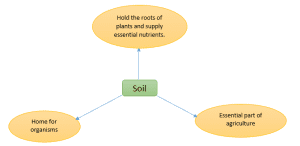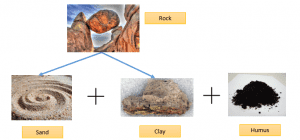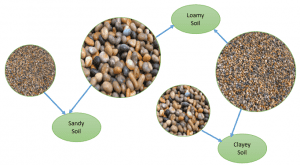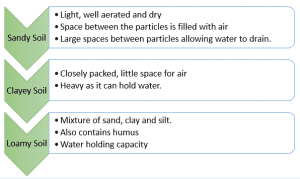Soil
Soil is one of the most important natural resources. It supports varied life forms.

Soil Profile
Soils are composed of different layers but how to recognize the order of different layers? To know the precedence of layers, we can perform an activity. Add some soil to a glass of water and allow it to settle. Refer the figure below.

The rotting dead matter in the soil is known as humus. Humus provides necessary nutrients to the soil.
Weathering – It is the process of formation of soils. Soils are formed by the breaking down of rocks by water, wind and different climatic conditions.
A vertical cross-section of different layers of soil is known as a soil profile. Each layer has a different texture, colour, chemical composition and depth. These layers are known as horizons.


Weathering of rocks produces small particles of sand and clay. A mixture of sand and clay, along with humus, gives soil.

Sandy soils have a greater proportion of bigger particles. Clayey soils have a higher proportion of fine particles. In loamy soils, the proportion of large and small particles is the same. Refer to the figure below to visualize the difference between the structures of different types of soils.


Percolation rate

Absorption of water by soils
Take 100 gm of water in a flask and start pouring it over the soil. Note the initial level of water. Keep pouring until the water starts dripping from the soil. Using the calculations below, we can calculate the percentage of water absorbed by the soil.

Get detailed solutions to the questions of NCERT Books for chapter Soil, along with detailed explanations, only at BYJU’S.
Comments